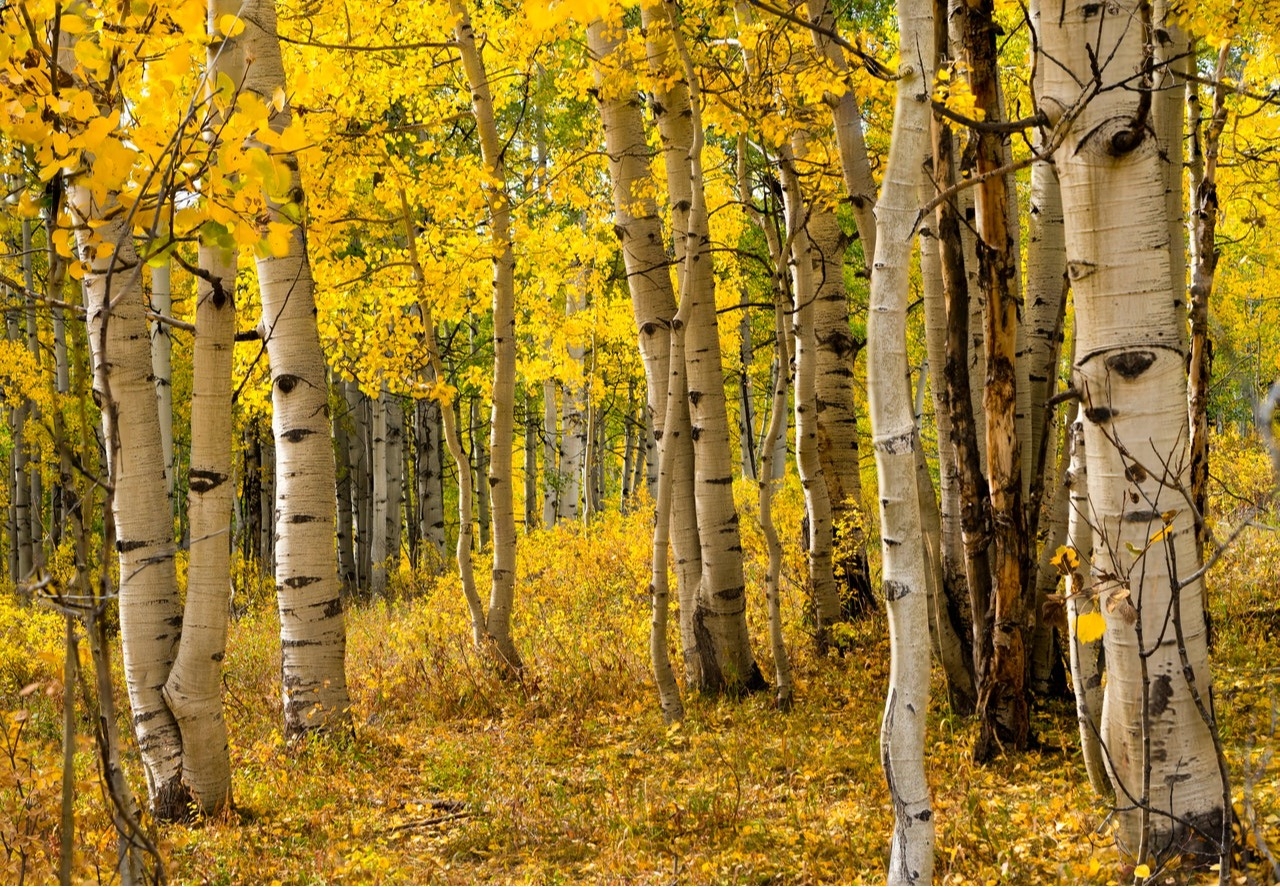Denver Tree Service Offers Advice on Keeping Front Range Aspens Happy and Healthy
There are few more breathtaking sights than driving up to the mountains from Denver to view the fall aspens as they change from green to gold. Aspens do well at higher elevations, so there are always plenty of them to see in the high country.
Many people try to bring the look of these beloved trees to their own landscaping. Unfortunately, when you plant these beauties in our harsh lowland locale, compacted soil and summer heat can take a toll on aspens. It can also set them up for trouble. Aspens do best in slightly moist soil with little soil compaction—away from foot traffic created by pets, kids, and others. It’s no surprise they thrive in Rocky Mountain forests.
Homeowners who want to bring aspens to their landscape can do so successfully if they are careful with these trees. Here are some tips.
Planting Aspens in Your Lawn
If your aspen is in a lawn, it is crucial that you are careful when you are mowing or weed whacking. Damaging the aspen trunk with either of these devices opens the tree up for disease and pests.
Keep the soil moist. Put a ring of mulch around your aspen, extending it from a few inches away from the trunk to as many as several feet out. This will help keep the moisture in the soil. Water your trees weekly during the hot summer months, but use a method that is slow, which will promote deep sinking into the soil. In winter, water once a month on a day that is warmer than 45 degrees and when there is no snow on the ground.
Your aspen will benefit from a fertilization treatment in the spring, but wait until the tree is well established. Newly planted aspen has very sensitive roots.
Picture the groves of aspen trees you see in the mountains—and remember this when you see the tiny sprouts popping up throughout your lawn. To avoid having an aspen grove on your lawn, just mow these shoots regularly. Don’t use chemical weed killers; these sprouts are connected to the tree’s root system, and a weed killer will damage the entire tree.
Common Aspen Issues to Watch For
Keep an eye out for the following problems with your aspen:
Contact Root Tree Service
Don’t leave your aspen’s fate to chance. Hiring a Denver tree service can help ensure your aspen thrives—even in your Front Range lawn. Contact us today!
Go Back Many people try to bring the look of these beloved trees to their own landscaping. Unfortunately, when you plant these beauties in our harsh lowland locale, compacted soil and summer heat can take a toll on aspens. It can also set them up for trouble. Aspens do best in slightly moist soil with little soil compaction—away from foot traffic created by pets, kids, and others. It’s no surprise they thrive in Rocky Mountain forests.
Homeowners who want to bring aspens to their landscape can do so successfully if they are careful with these trees. Here are some tips.
Planting Aspens in Your Lawn
If your aspen is in a lawn, it is crucial that you are careful when you are mowing or weed whacking. Damaging the aspen trunk with either of these devices opens the tree up for disease and pests.
Keep the soil moist. Put a ring of mulch around your aspen, extending it from a few inches away from the trunk to as many as several feet out. This will help keep the moisture in the soil. Water your trees weekly during the hot summer months, but use a method that is slow, which will promote deep sinking into the soil. In winter, water once a month on a day that is warmer than 45 degrees and when there is no snow on the ground.
Your aspen will benefit from a fertilization treatment in the spring, but wait until the tree is well established. Newly planted aspen has very sensitive roots.
Picture the groves of aspen trees you see in the mountains—and remember this when you see the tiny sprouts popping up throughout your lawn. To avoid having an aspen grove on your lawn, just mow these shoots regularly. Don’t use chemical weed killers; these sprouts are connected to the tree’s root system, and a weed killer will damage the entire tree.
Common Aspen Issues to Watch For
Keep an eye out for the following problems with your aspen:
- Iron chlorosis happens when your tree isn’t getting enough iron from the soil, so it cannot make chlorophyll. You’ll see the leaves yellowing but with green veins.
- Cytospora is a canker-causing fungus that enters the tree through a wound and attacks trunks or branches. The orange cankers stain the white bark.
- Marssonina leaf blight is a fungus that shows up on leaves as yellow-ringed dark spots that get bigger and bigger.
- Oystershell scale is a pest that moves about as a crawler on trunks or branches, killing the area where it feeds.
- If your aspen has lumpy twigs, the poplar twiggall fly (Hexomyza schineri) has likely invaded. These small maggots don’t harm the tree, but they are unattractive.
Contact Root Tree Service
Don’t leave your aspen’s fate to chance. Hiring a Denver tree service can help ensure your aspen thrives—even in your Front Range lawn. Contact us today!
